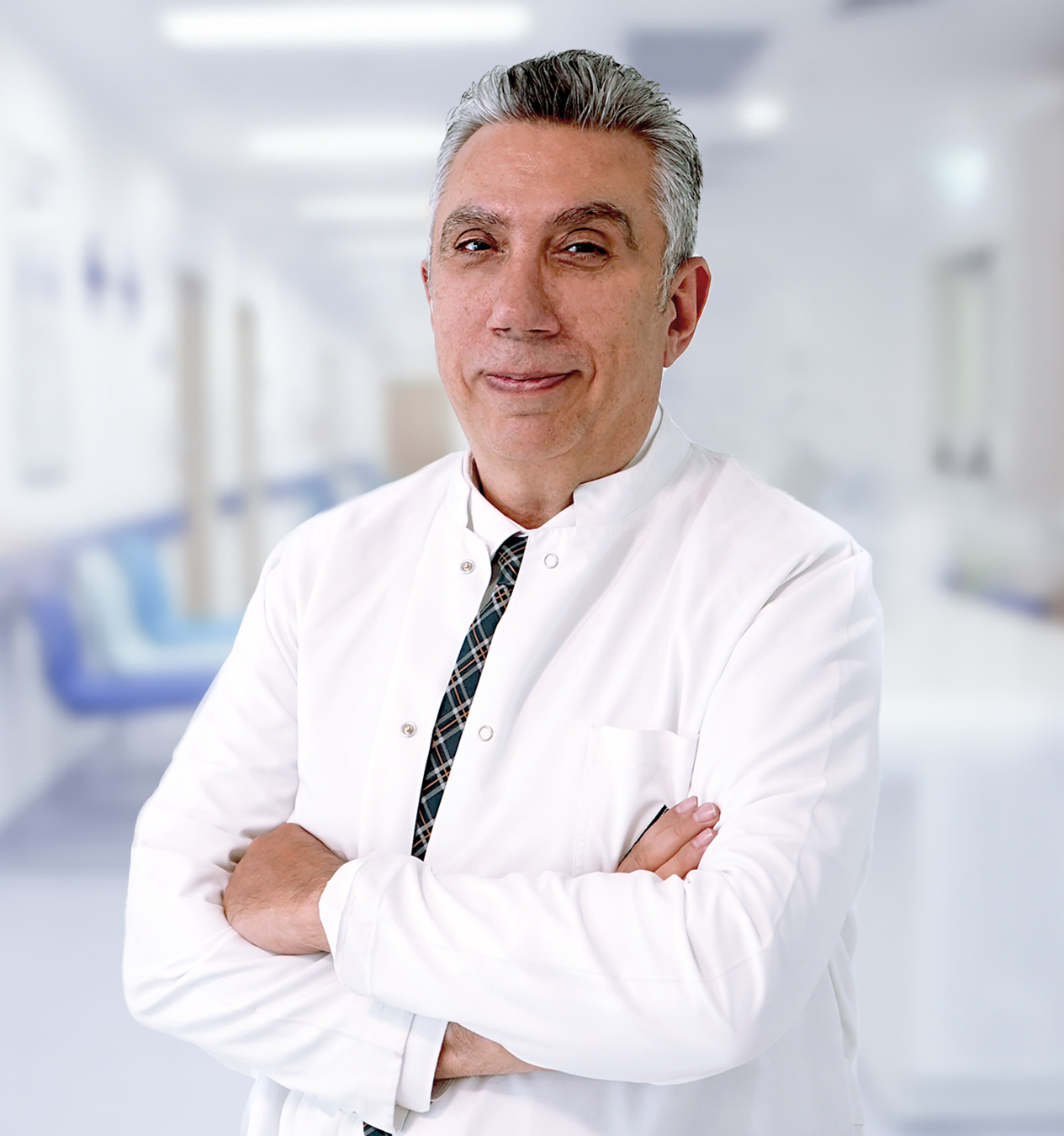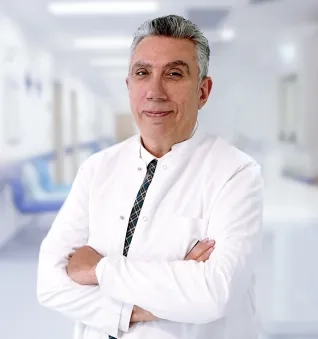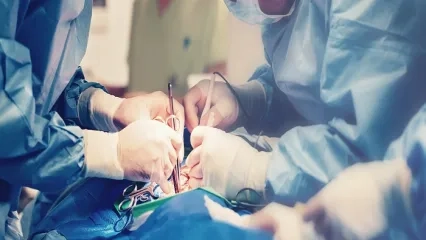Alo Yeditepe
Alo Yeditepe
Aortic Aneurysm
“Aortic Aneurysm May Not Cause Symptoms Before It Causes Serious Complications”
Cardiovascular Surgery Specialist Prof. Dr. Noyan Temuçin OĞUŞ points out the importance of regular heart examination for aortic aneurysms, where delay poses a life-threatening risk. Dr. Oğuş said, "No matter how large the aneurysm surgery is, timely intervention before aneurysm complications develop increases success." Prof. Dr. Oğuş also pointed out that aortic aneurysm may not cause any symptoms before it causes serious complications.
Yeditepe University Kozyatağı Hospital Cardiovascular Surgery Specialist Prof. Dr. Noyan Temuçin Oğuş said, “Delay in aortic aneurysms, which is a problem that needs to be diagnosed and treated on time, can pose a life risk. He made important statements on the subject by saying, "In this situation, which occurs when the main artery, which we call the aorta, exceeds a certain diameter and expands for different reasons, the patient may not experience any complaints."
“The Aortic Wall Begins to Thin and Expand”
“The diameter of the ascending aorta is 28-32 millimeters for people of average height and weight. "We call the excessive expansion of the aorta by increasing this diameter aneurysm," said Prof. Dr. Oğuş continued his words as follows:
“The aorta is an organ of ours that is responsible for carrying oxygenated blood to the tissues through blood pressure, which we call blood pressure. In order to resist this pressure, the aortic wall contains flexible and strong connective tissue fibers arranged in a microscopic level. While these fibers are broken down into molecules by some cellular and enzyme activities, they are also constantly renewed by being remanufactured. In some genetic diseases involving the connective tissue, arteritis, atherosclerosis disease, while the destruction of these fibers continues, the regeneration function is disrupted and the aortic wall begins to thin and expand.
“The fact that the aortic valve, which is normally three-leafed, is congenitally two-leafed (bicuspid aorta) is a condition in which ascending aortic aneurysms are very common, usually accompanied by aortic aneurysm. The valve itself often does not cause problems until middle age. Sometimes it causes symptoms such as stenosis and/or insufficiency (the valve cannot close and blood leaks back). Complications occur in the form of the thinned aortic wall tearing outwards (rupture) or the layers forming the aortic wall separating from each other (dissection) and blocking the branches leading to the organs. “Both can cause sudden loss of life.”
It Can Be Noticed Randomly
Pointing out that a diagnosis can also be made incidentally during examinations performed for another complaint, our expert said, “For example, an enlargement of the aorta can be seen with Computed Tomography (CT) taken for suspicion of a lung infection. Sometimes, a murmur of stenosis or insufficiency in the aortic valve is heard, and when the patient is referred to cardiology, valve disease and aneurysm can be diagnosed. After diagnosis, aortic enlargement is monitored by ECHO or, better yet, CT scans at 3-6 month intervals. "When the aorta reaches the specified diameter or in cases of enlargement exceeding 3 mm at 6-month intervals, the patient is given surgery without waiting for the diameter to reach 50 mm, which is the surgical limit,"
Besides, Marfan; Ehlers-Danlos syndrome; Reminding that aneurysms related to the aorta and other arteries occur at an early age in some congenital connective tissue disorders such as annuloaortic ectasia. Dr. Oğuş said, "In such diseases, dissection and rupture may develop at an earlier age and therefore surgery is performed before reaching surgical limits."
“It Can Cause Serious Complications”
Prof. Dr. Oğuş Pointing out that this asymptomatic course of the disease is a risk-increasing factor, and if an undetected aneurysm does not rupture, it can cause difficulty in swallowing or shortness of breath when it reaches 7-8 centimeters and puts pressure on the surrounding organs. If there is an aneurysm formation in further parts of the aorta, for example, if an aneurysm has formed in the next Aortic Arch region where the arm and brain vessels exit, it may cause shortness of breath and difficulty swallowing at an earlier stage by putting pressure on the adjacent trachea and pharynx. While there may be complaints of pressure on the internal organs in the abdomen, the patient may feel a pulse in the abdomen or even notice a mass in the abdomen. "Especially in a weak patient, the pulsation above the mass can even be seen with the naked eye.
“A severe pain is often felt in the ruptured area.”
Our Cardiovascular Surgery Specialist continued his words as follows:
“Ascending Aorta is an organ located in the cardiac sac adjacent to the heart; Its rupture may result in rapid filling of blood into the cardiac sac, resulting in loss of life within a few minutes. Preventing bleeding around the aorta in its course in this region; There is no tissue that can create external pressure, so it is the area of aneurysms that most often results in complications and loss of life. In this region, connective tissue diseases and Bicuspid Aortic diseases are considered the main causes. Since the Aortic Arch region, where the arm and brain vessels originate, has a relatively thicker outer layer, it is more likely to survive during rupture and get to the hospital. The thoracic and abdominal aortic regions, respectively, located further away from this region, also have a relatively thick outer layer, but during rupture, they can open into the chest or abdominal cavities and result in loss of life within minutes. Severe pain is often felt in the ruptured area, and especially if blood loss reaches significant amounts, the patient goes into shock.
More than 70 percent of patients die during rupture or dissection. Most surviving patients die within the next 1-2 hours unless they undergo emergency surgery. In this phase, which requires urgent surgery, the risk of both complications and mortality is high; According to surgeries performed "without damaging the aortic tissue"; “It increases 5-6 times.”
Genetic Characteristics Are Very Effective in Aneurysms Seen in Young People
Providing information about aortic aneurysms seen at an early age, Prof. Dr. Oğuş said, “Genetic connective tissue diseases at an early age, aortic aneurysms that occur due to bicuspid aortic valve after the age of 30-35, and sometimes aortic valve diseases and arteriosclerosis, which we call atherosclerosis, are responsible for the aneurysms we see at older ages. "In short, genetic features come first in aneurysms seen at all ages,"
“Traumas Can Also Cause Aortic Rupture”
Explaining that traumas also cause aortic ruptures, the Cardiovascular Surgery Specialist continued: “Traumas that cause sudden deceleration, such as falling from a height or traffic accidents, can also cause aortic rupture. "If the victim can get to the hospital, his chance of survival is quite high."
“Being able to act early is an important factor in the success of surgery.”
Stating that aortic aneurysm surgery is a very large surgery that requires experience, our Cardiovascular Surgery Specialist said: “We can achieve much more successful results in surgeries performed without the development of conditions we call dissection or rupture. Experience is very important for these major surgeries that can pose serious life risks.. "In surgeries, it may sometimes be necessary to cool the body to 18 degrees and stop all blood circulation, and sometimes it may be necessary to use separate 'perfusion techniques' to ensure the nutrition of the brain and internal organs during the surgery,"
Our specialist, who also gave information about advanced surgical techniques, continued his words as follows:
“In the last 15-20 years, an increasing number of aortic aneurysms located in the chest and abdomen can be treated with this new technique called Endovascular Aortic Repair (EVAR). Nowadays, open classical surgeries can only be performed on "only a small portion" of our patients who have anatomical features that are not suitable for EVAR. “With the advancement of technology, it has become possible to repair aneurysms occurring in the thoracic aorta and abdominal aorta with grafts wrapped around a stent, with much lower risk and with very small surgical incisions and with interventions similar to angiography.
Unfortunately, the gold standard treatment for Ascending Aorta adjacent to the heart and Aortic Arch aneurysms just away from it is still classical open heart surgery. With technological advances and the spread of experience, in the near future, this type of surgery, which is at the peak of cardiac surgery in terms of risk and application technique and is the biggest surgery that the human body can endure, may become history.
Those with a family history of early death and heart attack... Pay Attention to Checkups!
Yeditepe University Kozyatağı Hospital Cardiovascular Surgery Specialist gave the following information about the precautions to be taken and the frequency of checks on this issue, which is extremely important for all ages:
“Every child should be evaluated for the cardiovascular system by a pediatrician and should be followed throughout the growth period. When an abnormality is noticed in the cardiovascular system, it should be evaluated by a pediatric cardiologist and followed up if necessary.
Although the age between 20 and 35 is a relatively safe period in terms of cardiovascular diseases, it should not be forgotten that syndromes with connective tissue anomalies are most commonly seen at these ages. Eye disorders, joint and spine deformities, long arms and legs, palate deformities due to such a disease; hyperflexible joints, which are most evident in the finger joints; In such cases, it is very important for these young people to be evaluated by a cardiologist.
In terms of preventive medicine, it would be appropriate for women to undergo periodic cardiological examinations and examinations starting from the age of 45 and men from the age of 40 among people who we accept as having a "healthy background and family history" who have no family history and no complaints. It will enable the early diagnosis of diseases that cause the most deaths, such as atherosclerosis, as well as diseases that can progress insidiously without causing any complaints and lead to sudden deaths, such as aortic aneurysm.
"It should always be kept in mind that people who have had 'early and sudden death' in their family or relatives, even if the cause is not determined, may be 'potential heart patients', and it is recommended that they should have their cardiology follow-up 5 years earlier."
About
Faculty and Year of Graduation:
Istanbul Faculty of Medicine, 1988
Alo Yeditepe




